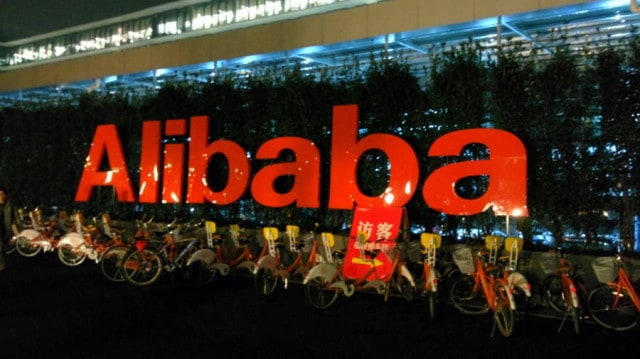
Chinese conglomerate Alibaba has been a big winner since its monstrous initial public offering back in 2014. The stock has gained nearly 160% from its IPO price, bringing its total market capitalization to around $450 billion.
Can Alibaba continue to provide such outsize returns in the future? Maybe. But if you want some alternatives that have a good shot at outperforming the Chinese wunderkind, three of our contributors have some ideas. Here’s why you should take a look at Yum China (NYSE:YUMC), Mattel (NASDAQ:MAT), and QEP Resources (NYSE:QEP).
China loves fast food
Nicholas Rossolillo (Yum China): Spun-off from former parent Yum! Brands (NYSE:YUM) in late 2016, Yum China is the exclusive licensee of Kentucky Fried Chicken, Pizza Hut, and Taco Bell restaurants in the world’s most populous country. While those fast-food chains aren’t exactly a growth story here in the states, it’s a different tale on the other side of the Pacific.
KFC is China’s largest restaurant chain with nearly 5,500 locations, and Pizza Hut is a leader in the casual-dining segment with almost 2,200. Taco Bell is practically non-existent, having recently relaunched in the country with three restaurants in Shanghai. That’s a lot of restaurant locations, but China’s middle class still is growing quickly. That helped support 691 new store openings and a 4% increase in same-store sales in 2017.
Company management believes Yum China has a long runway ahead of it, too. There are over 15,000 Yum! Brands restaurants operating in the U.S., which has a quarter of the population of China. Over 90% of China’s restaurant industry operates independently compared to only 47% in the U.S. As a result, Yum is optimistic it can expand and eat up some of that market share in the years ahead.
Since becoming its own company about 1 1/2 years ago, Yum China’s stock is up a little over 50%. If it’s able to keep pace with its new location openings and same-store-sales increases, there could be a lot left in the tank for this one.
A troubled toy company
Tim Green (Mattel): Toymaker Mattel could provide exceptional returns going forward — not because the company is doing well but because expectations are just about at rock bottom. The stock has lost about two-thirds of its value over the past five years as revenue and profits have plunged. The company’s turnaround never seems to gain much traction, and the recent bankruptcy of Toys “R” Us hasn’t made things easier.
Mattel’s first-quarter report offered some reasons to be hopeful. Global sales of Barbie, one of what the company calls its power brands, soared 24% year over year. Hot Wheels, another power brand, registered a 15% sales increase. Other brands suffered declines, including Fisher-Price and American Girl. But excluding the impact of the Toys “R” Us bankruptcy, global gross sales were up 2%.
Mattel still has a lot of work to do, and new CEO Ynon Kreiz has a tough job ahead of him. Mattel’s losses nearly doubled in the first quarter compared to the prior-year period, even after backing out charges related to Toys “R” Us. Sales will need to rebound in a big way for all that red ink to turn black.
The latest chapter in Mattel’s turnaround is far from a sure thing. But if the company can finally put the past few years behind it and re-emerge as a world-class toy company, the stock could be a big winner in the coming years.
A beaten-down oil stock with high-octane upside
Matt DiLallo (QEP Energy): The past few years have been among the most challenging for the oil industry in decades. Those tough operating conditions hit QEP Energy hard, causing its stock to shed more than 50% of its value over the past three years. However, the company recently unveiled a bold turnaround plan that, when combined with improving oil prices, could fuel high-octane returns from here.
Last month, QEP Resources announced plans to transform into a pure play in the fast-growing Permian Basin, where drillers can earn exceptionally lucrative returns at low oil prices. As part of that strategy, the company will sell off all its other assets and use the cash to jump-start its Permian development program, retire debt, and repurchase up to $1.25 billion in shares. That’s a needle-moving buyback for a company with a $2.7 billion market cap.
QEP Resources’ plan has the potential to create tremendous value for shareholders in the coming years by unlocking the value of its non-core assets and then using that cash to buy back its beaten-down stock. The repurchase program alone could fuel big-time outperformance, given what it’s done for other oil stocks over the past couple of years. Add in the high-return growth it should deliver from accelerating development in the Permian Basin along with the potential for further improvement in oil prices, and QEP Resources could put the returns of most stocks — including Alibaba’s — to shame in the coming years
